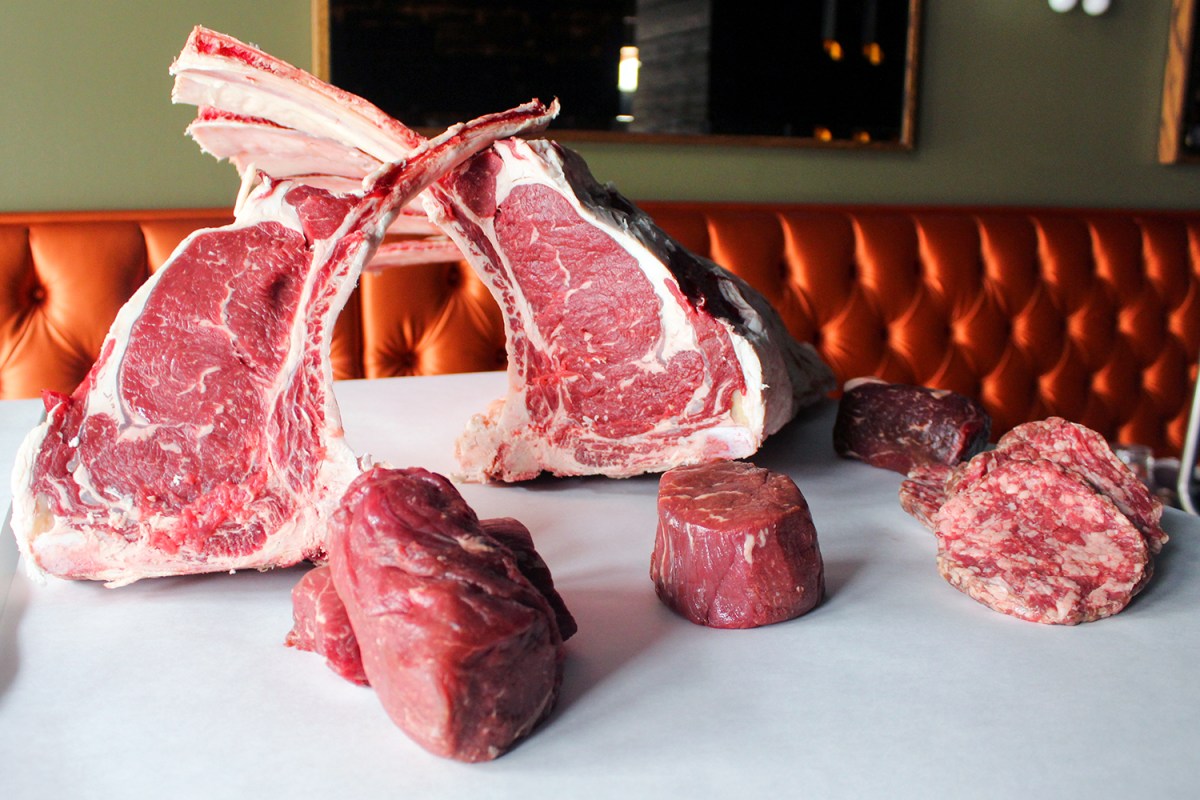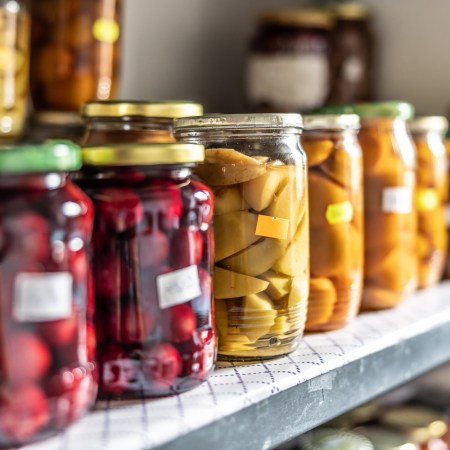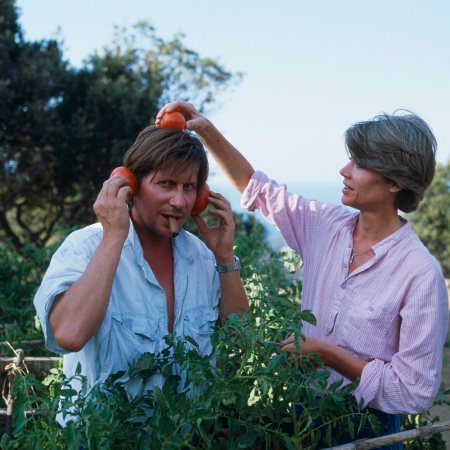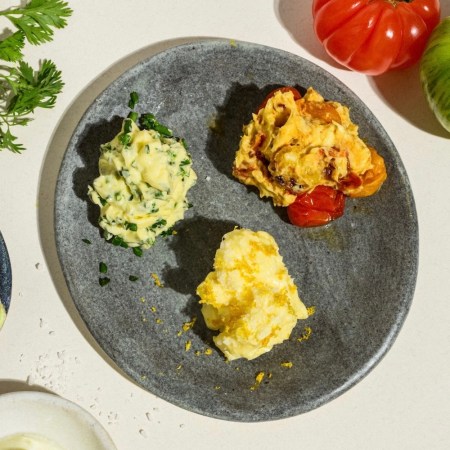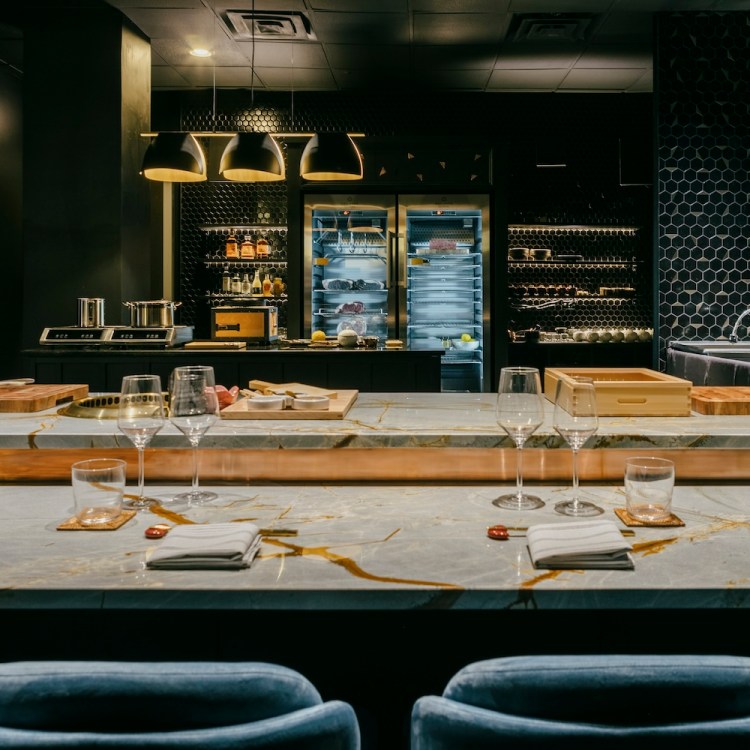Grilled flank steak isn’t just problematic due to its outsize environmental impact — it’s boring. Consider this, instead, your summer of grilled kidneys.
Lesser-known cuts of meat — not just offal but also tongue, oxtail or whole, bone-in shoulder — can seem unwieldy. They shouldn’t, though, and whole-animal cooking is smart, economical, (more) sustainable and intriguing, all at once. Just ask Chicago chef Devin Kreller. At his six-time Michelin Bib Gourmand-winning restaurant Wood, he’s committed to buying not individual cuts of meat, but whole halves and sides of animals. Each week, he sources hog halves, whole lambs, beef sides, whole chickens, and whole ducks from local farms Catalpa Grove and Slagel Family Farm.
“Every Wednesday, we get our deliveries from the farmer,” he says. “So it’s quite the butchery day!”
And while such an endeavor might seem untenable for the home cook, recent developments on the marketplace, from meat shares like the Chicago Meat Collective to companies like Crowd Cow, which commits to only butchering an animal once all of the cuts have been purchased, allow you to ensure that cooking meat at home engenders no food waste. Buying meat this way also allows you to choose your source, selecting small family farms that raise their animals humanely and sustainably.
“What we’re doing here isn’t just for the sustainability of the beef, but the family relationships,” says Kreller. “Supporting local people that are really working hard and have been doing it for generations.”
Such meat may be a bit more expensive and require more work than the supermarket variety, but it’s worth it, according to Kreller.
“There’s a lot of misunderstanding or missed opportunities from people that are just going to the supermarket and picking up a piece of meat that’s shrink-wrapped and not really knowing where it’s coming from,” he says.
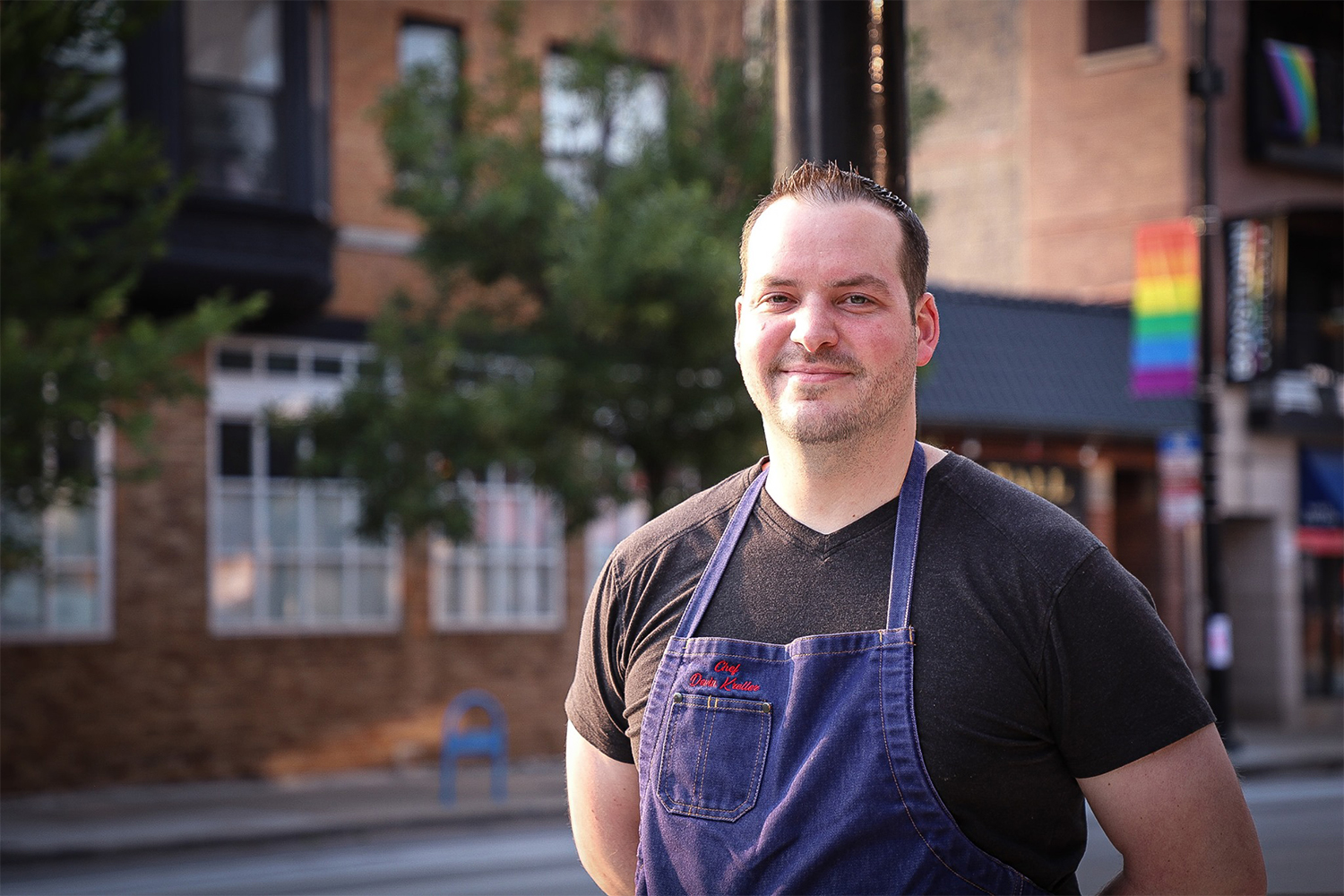
Of course, when you’re buying a whole hog or a side of beef, or even a whole duck or chicken, you may encounter some unfamiliar cuts. But this, Kreller says, is part of the fun: the “driving force” behind culinary creativity. Your tool, in this case? Your grill. Perfect for both high-heat searing and indirect smoking and slow-cooking, it will help you master even the least familiar meat cuts in your hog share or CSA box.
One cut that’s currently exciting Kreller, especially as we sit securely in spring, is lamb shoulder. It’s a cut he admits is “not as familiar for some people.” “A lot of the time, it’s something you’ll just cut up and use for ground lamb,” he says. “But there’s a lot of really, really great flavor in there.”
To show it off at its best, Kreller recommends rubbing a whole, bone-in lamb shoulder in a mix of fresh spring thyme, rosemary, a touch of chili and “tons of garlic.” Then, simply slow-cook it over coals (or indirect heat on a gas grill) for about three hours. (That’s the recipe right there: rub in the thyme, rosemary, chili and garlic, then slow-cook it over coals or indirect heat on a gas grill for three hours. You’re done. It’s delicious. Enjoy.)
“The bone will just pull out,” he says, “and you’ve got some amazing meat right there to serve with some tortillas or some rice on the side.”
Any other cut you might slow-braise, like pork shoulder or beef shin, works wonderfully with this method; feel free to change up the aromatics and herbs to best suit the flavor of the meat. Cider or smoky spices marry wonderfully with pork; crushed black peppercorns and rosemary stand up impeccably to beef.
Another thing that’s super exciting to Kreller right now? The aforementioned kidneys and liver, which have gotten a bad rep, he says, due to years of technical ignorance and poor sourcing.
“I think the biggest issue is: If you’ve ever had organ meat, and it just doesn’t taste good, it’s because those cuts of meat are the ones that turn the quickest.” In other words, if your only brush with liver is a specimen that’s been sitting on a supermarket shelf for God knows how long, it’s no wonder it’s not the most appealing prospect for your cookout.
“I think that’s the reason why people associate ‘offal’ with ‘awful,’” Kreller says. “Which doesn’t necessarily need to be the case at all!”
When you’re buying fresh, high-quality meat from a farmer you trust, the assertive flavor of kidney, but also liver and hearts, is tempered somewhat, becoming more balanced. “If you have the quality of the ingredients, the flavor’s gonna be very, very clean,” says Kreller. “It should never taste off or too intense or too off-putting.
And there are ways that you can prepare these cuts that complement their more powerful flavors.
Marinades, for instance, are a great option. At Wood, Kreller does a “play on liver and onions,” smoking the onions and marinating lamb liver in Porto and fresh garlic: the perfect complement to the offal’s iron-rich flavor. Inspired by his Vietnam-born girlfriend of Chinese heritage, Kreller also loves marinating kidneys in a Sichuan style, with chile, garlic, ginger and Sichuan peppercorns. “Something a little bit more aggressive, marinade-wise, will actually heighten the flavor,” he explains.
To enjoy them at their best, it’s also important to prep your organ cuts for the grill by trimming any veins or membranes. “They can be a little bit chewy,” says Kreller. “Just like if you had a steak that had a lot of sinew on there.”
Another key to the perfect final texture? Cooking temperature.
“Make sure that you cook them to no more than medium,” he says. “When you get into more of a very well-done type temperature, they’ll get a little bit tougher. And the flavor is much more intense when a protein is cooked well done, versus rare.”
And if you’ve got any meat cuts that don’t make it onto the grill right away, you can always cure them for later. At Wood, Kreller’s creativity shines in his house-cured charcuterie, made with off-cuts like jowl or fatty pork belly. From guanciale to capicola to lardo, curing is a time-tested way of preserving the sheer quantity of meat you often find yourself saddled with when sourcing it like a chef. And you can do the same at home; guides like this one will help.
In addition to serving these cured products on a charcuterie platter, you can also take a page out of Kreller’s book and grill up a delicious summertime flatbread.
“We have one currently that features house-made ricotta, some of the lardo, shaved thinly, and San Marzano tomato sauce with green garlic from one of the local farms,” he says. It’s a delicious summertime starter to usher in a more sustainable grilling season.
Every Thursday, our resident experts see to it that you’re up to date on the latest from the world of drinks. Trend reports, bottle reviews, cocktail recipes and more. Sign up for THE SPILL now.
